10 Most Famous Temples In Mumbai
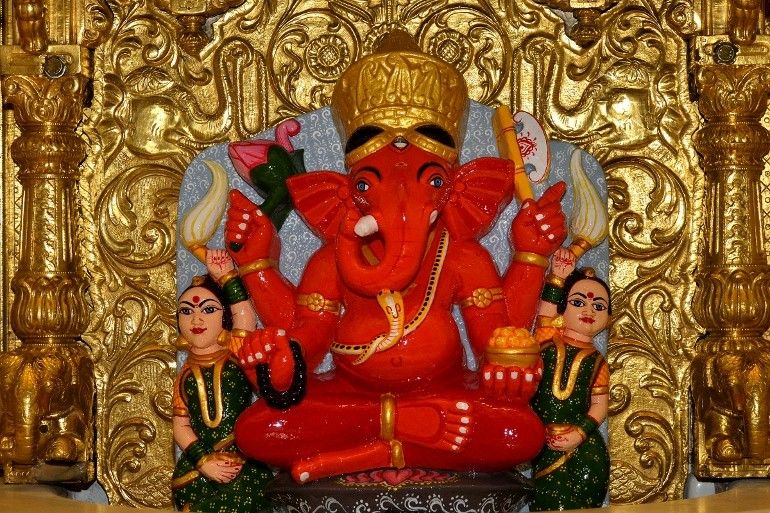
Mumbai was earlier known as Bombay, a city that never sleeps. Mumbai is a fast-paced metropolitan city that sees millions of people coming to fulfill their dreams. Mumbai is also called as the commercial and economic capital of India. But Mumbai is not just about business; the city hides some of the beautiful temples in India. Mumbai temples provide its residents and travelers with the much needed tranquility with unique culture and architectural style.
Mumbai, the bustling metropolis on the western coast of India, is not only a financial and entertainment hub but also home to a rich tapestry of cultural and religious heritage. Among its myriad landmarks, the city boasts several magnificent temples that stand as testament to its spiritual diversity and architectural splendor. Here, we delve into the enchanting world of the 10 most famous temples in Mumbai:
1. Siddhi Vinayak Temple
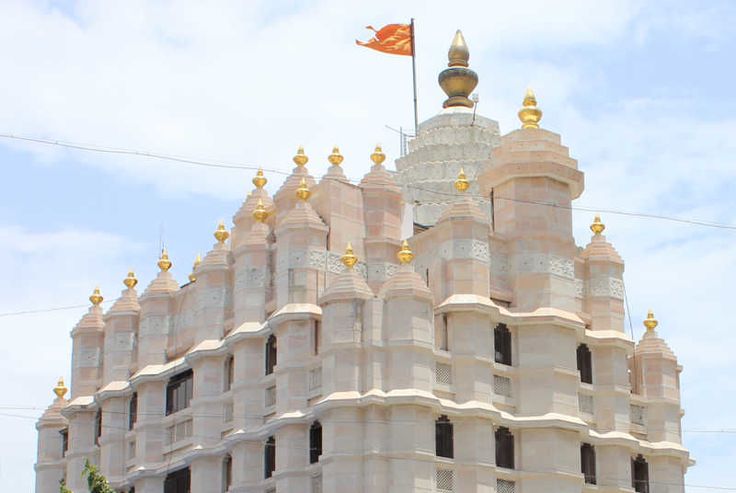
The Siddhivinayak Temple is a famous Hindu temple dedicated to Lord Ganesha, located in Prabhadevi, Mumbai, India. Here are some key details about the temple:
Deity: The primary deity worshipped in the Siddhivinayak Temple is Lord Ganesha, who is also known as Siddhivinayak, which means "the one who grants wishes" or "the one who is easily pleased."
Location: The temple is situated in the Prabhadevi area of Mumbai, Maharashtra, India. It is a prominent and well-visited landmark in the city.
History: The temple was originally built in 1801 by a contractor named Laxman Vithu Patil. The idol of Lord Ganesha enshrined in the temple is believed to be self-manifested, and it was discovered during the construction of a nearby lake.
Architecture: The temple has a traditional Hindu architectural style with a dome-shaped structure. The central dome is gold-plated, and the main sanctum houses the idol of Lord Ganesha. The temple complex also includes other shrines dedicated to various deities.
Significance: Siddhivinayak Temple is one of the most revered and visited temples in Mumbai. Devotees believe that worshipping Lord Ganesha at this temple can bring prosperity, success, and the fulfillment of desires. The temple is particularly popular among the residents of Mumbai and attracts a large number of devotees, especially on Ganesh Chaturthi, a festival dedicated to Lord Ganesha.
Ganesh Chaturthi Celebration: Ganesh Chaturthi is a grand festival celebrated in Mumbai and other parts of Maharashtra, marking the birth of Lord Ganesha. During this time, the Siddhivinayak Temple witnesses a surge in devotees, and elaborate decorations and festivities take place.
Visiting the Temple: The Siddhivinayak Temple is open to people of all faiths, and there is no entry fee. However, it can get crowded, especially on auspicious days and during festivals. Devotees often offer special prayers, flowers, and coconuts to seek the blessings of Lord Ganesha.
The Siddhivinayak Temple holds cultural and religious significance, and its iconic status makes it a symbol of faith and devotion in Mumbai.
SiddhiVinayak temple in Mumbai is a popular lord Ganesh temple. The temple was established in 1801 by Devbhai Patel and Laxman Vithu. SiddhiVinayak temple is located at S.K Bole Marg, Prabhadevi. The temple architectural beauty is truly remarkable. It is not only famous for its architecture but also believed that whispering your wishes into the ear of the idol will eventually come true.
2. Mumbadevi Temple
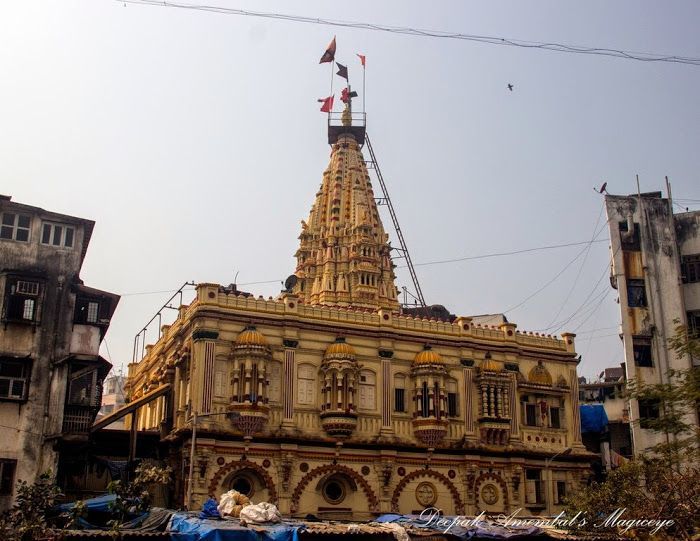
The Mumbadevi Temple is another significant Hindu temple located in Mumbai, Maharashtra, India. Here are some key details about the temple:
Deity: The main deity of the Mumbadevi Temple is Mumbadevi, who is considered to be the city's patron goddess. Mumbadevi is believed to be a form of Mother Goddess or Shakti.
Location: The temple is situated in the Bhuleshwar area of Mumbai, near Zaveri Bazaar. It is one of the oldest temples in the city and holds historical and cultural importance.
History: The origin of the Mumbadevi Temple dates back to the 14th century. According to folklore, the temple was constructed by the Koli fishermen, the original inhabitants of Mumbai, in gratitude to Mumbadevi for protecting them. Over the centuries, the temple has undergone renovations and reconstructions.
Architecture: The temple follows a simple and traditional architectural style. The sanctum sanctorum houses the idol of Mumbadevi, adorned with traditional jewelry and garments. The temple's facade and interior reflect the cultural heritage of the region.
Significance: Mumbadevi Temple holds immense significance for the people of Mumbai, and it is considered a guardian deity of the city. The name "Mumbai" is said to be derived from "Mumba," an alternative name for Mumbadevi. Devotees believe that worshiping Mumbadevi brings protection, prosperity, and well-being.
Festivals: The temple witnesses a surge in devotees, particularly during Navratri, a festival dedicated to the worship of the Divine Mother. Navratri is celebrated with great enthusiasm, and special rituals and cultural events take place during this period.
Visiting the Temple: The Mumbadevi Temple is open to people of all faiths, and there is no entry fee. Devotees offer flowers, coconuts, and traditional offerings to seek the blessings of Mumbadevi.
Local Traditions: The temple is associated with several local traditions and customs. It has become a symbol of the city's cultural and religious diversity.
The Mumbadevi Temple, like many other temples in Mumbai, stands as a testimony to the rich cultural and religious heritage of the region. It continues to be a place of worship and a cultural landmark that attracts devotees and visitors alike.
Mumbai derives its name from one of the city’s oldest temples known as Mumbadevi. This holy place has the idol of Goddess Mumba. Goddess Mumba is believed to be the reincarnation of the goddess Durga. The temple was built in the year 1675; the Goddess of this temple is decorated with jeweler and beautiful altar. The locals believe that visiting the Mumbadevi temple on Tuesday is very auspicious. Mumbadevi is also considered as a patron goddess for Mumbai native communities like agriculture, fisherman, and Somvanshi Kshatriya.
3. Mahalakshmi Temple
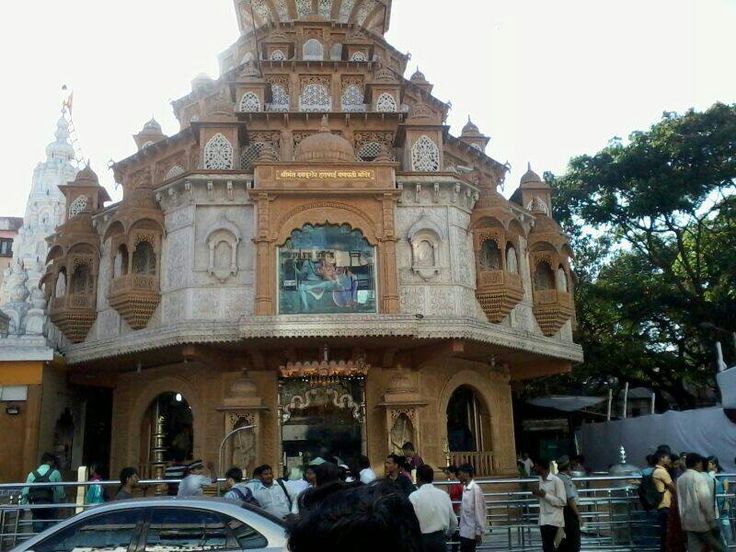
The Mahalakshmi Temple is a well-known Hindu temple dedicated to the goddess Mahalakshmi, the goddess of wealth and prosperity. Here are some key details about the temple:
Deity: The primary deity of the Mahalakshmi Temple is Goddess Mahalakshmi, often regarded as the embodiment of wealth, fortune, and prosperity. The temple is one of the significant shrines dedicated to Mahalakshmi in India.
Location: The Mahalakshmi Temple is situated in the Breach Candy area of Mumbai, Maharashtra, India. It is located on the northern side of Malabar Hill, overlooking the Arabian Sea.
History: The temple has a rich history and is believed to have been originally constructed in the 18th century. It underwent renovations and reconstructions over the years, and the current structure was built in 1831 by Dhakeray, a Hindu merchant.
Architecture: The temple showcases a blend of classical Hindu temple architecture with ornate carvings and sculptures. The main sanctum houses the idol of Mahalakshmi, adorned with jewelry and garments. The temple's architecture reflects the cultural and artistic heritage of the region.
Goddess Mahalakshmi: Devotees believe that worshiping Goddess Mahalakshmi at this temple can bring financial prosperity, success, and overall well-being. The temple attracts a significant number of devotees seeking the blessings of the goddess.
Three Forms of Mahalakshmi: The Mahalakshmi Temple is unique as it houses idols of three different forms of Mahalakshmi - Mahakali, Mahalakshmi, and Mahasaraswati. Devotees can offer prayers to all three goddesses within the temple complex.
Festivals: The temple witnesses increased activity and devotion during festivals dedicated to Goddess Mahalakshmi, such as Navaratri. During Navaratri, the temple is adorned with decorations, and special events and rituals are organized.
Visiting the Temple: The Mahalakshmi Temple is open to people of all faiths, and there is no entry fee. Devotees often offer flowers, fruits, and other traditional items as part of their worship.
The Mahalakshmi Temple is not only a place of religious significance but also a cultural and architectural landmark in Mumbai. It attracts devotees and visitors alike who come to seek the blessings of Goddess Mahalakshmi and to experience the spiritual ambiance of the temple.
In the top list of religious sites in Mumbai, Mahalakshmi temple holds a top spot. Mahalakshmi temple is located next to the seashore. This beautiful temple is dedicated to goddess Durga, Lakshmi, and Saraswathi. The deity at the temple is decorated with a golden nose ring and a mask. People across the world come to visit this temple for its beauty and simplicity.
4. ISKCON Temple
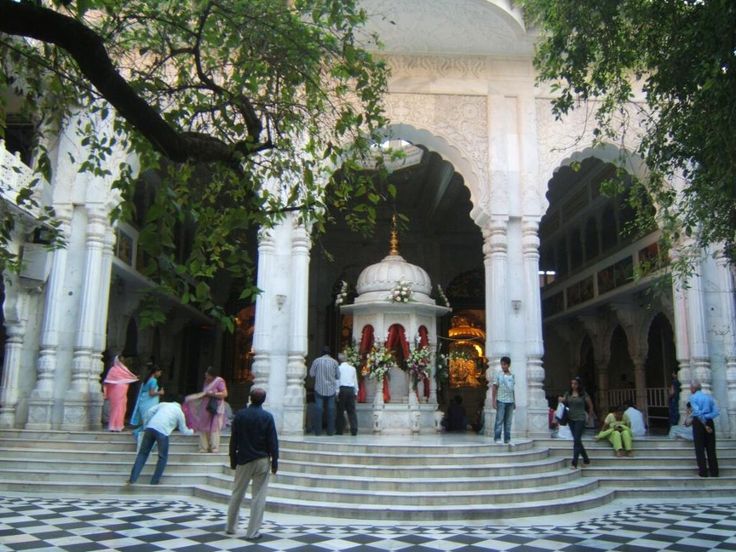
The ISKCON Temple, officially known as the Sri Sri Radha Rasabihari Temple, is a prominent temple dedicated to Lord Krishna and is affiliated with the International Society for Krishna Consciousness (ISKCON). Here are some key details about the ISKCON Temple:
Deities: The main deities worshipped in the ISKCON Temple are Sri Sri Radha Rasabihari, which are forms of Lord Krishna and His consort Radha. The temple also houses the deities of Lord Sita, Rama, Lakshman, and Hanuman.
Location: The ISKCON Temple in Mumbai is located in the Juhu area, near the famous Juhu Beach. It is one of the prominent landmarks in the city.
History: The construction of the ISKCON Temple in Mumbai began in the late 1970s and was completed in 1986. The temple is part of the global network of ISKCON centers founded by A.C. Bhaktivedanta Swami Prabhupada, who introduced the International Society for Krishna Consciousness to spread the teachings of Lord Krishna as presented in the ancient Vedic scriptures.
Architecture: The ISKCON Temple in Mumbai follows a contemporary temple architecture style. It features a large dome and spires, and the temple complex includes beautifully landscaped gardens. The interiors are adorned with intricate carvings, paintings, and sculptures depicting scenes from the life of Lord Krishna.
Teachings: ISKCON promotes the practice of bhakti yoga, emphasizing devotion and surrender to Lord Krishna. The temple conducts regular religious and spiritual activities, including kirtans (devotional singing), lectures on Vedic philosophy, and ceremonies like arati (worship with lamps).
Cultural and Educational Activities: In addition to religious activities, the ISKCON Temple in Mumbai is involved in various cultural and educational initiatives. It conducts seminars, workshops, and festivals to promote Vedic culture and spirituality.
Festivals: The temple celebrates major Hindu festivals with grandeur, including Janmashtami (the birth of Lord Krishna) and Radhastami (the appearance day of Radha). These festivals attract a large number of devotees and visitors.
Food Distribution: ISKCON is well-known for its Food for Life program, which provides free vegetarian meals to the needy. The temple in Mumbai actively participates in this program, serving prasadam (sanctified food) to thousands of people.
Visiting the Temple: The ISKCON Temple is open to people of all faiths, and visitors are welcome to participate in the daily activities. The temple also has a gift shop offering devotional items and literature.
The ISKCON Temple in Mumbai is not only a place of worship but also a cultural and educational center that promotes spiritual values and Vedic philosophy. It serves as a hub for those interested in practicing and learning more about the teachings of Lord Krishna.
There is hardly any city in India without ISKCON temple. ISCKON temple of Mumbai is the most peaceful place in the city. The temple is spread over a popular area of Mumbai called Juhu. ISKCON is popularly known as Hare Krishna Movement, which was founded by A.C Bhaktivedanta Swami. The beautiful marble complex of the temple adorned with delightful murals and sculptures are a delight for eye-sight. ISKCON was built to preserve the rich heritage of Lord Krishna.
5. Babul Nath Temple
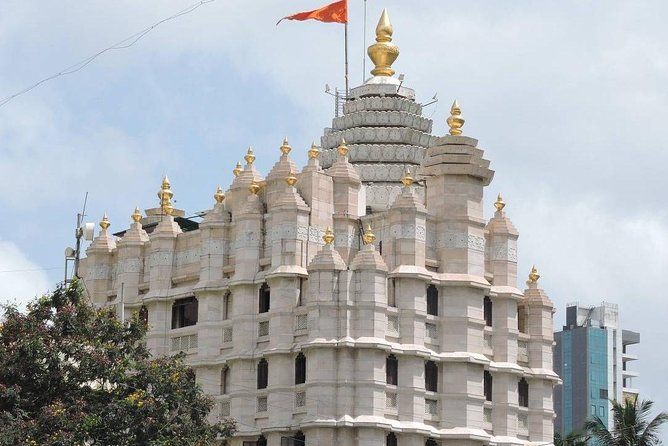
It seems there might be a slight error in the name you provided. It's possible you meant "Babulnath Temple" instead of "Babul Nath Temple." I'll provide information on Babulnath Temple:
Babulnath Temple:
Deity: The main deity of Babulnath Temple is Lord Shiva, also known as Babulnath. The temple is dedicated to Lord Shiva in the form of a Babul tree, which is considered sacred.
Location: Babulnath Temple is located in the Malabar Hill area of Mumbai, Maharashtra, India. It stands atop a small hillock, providing a serene and elevated view of the city.
History: The temple has a long history and is believed to have been built in the 12th century. Over the centuries, the temple underwent several renovations, with the current structure dating back to the late 18th century.
Architecture: Babulnath Temple features classical Hindu temple architecture. The sanctum sanctorum houses the Shiva Linga, and the temple complex includes other shrines dedicated to various deities. The temple is adorned with intricate carvings and sculptures.
Significance: Devotees believe that worshiping Lord Shiva at Babulnath Temple can bring blessings, protection, and spiritual well-being. The temple holds cultural and religious importance for the local community.
Festivals: The temple observes major Hindu festivals, with Maha Shivaratri being one of the most celebrated occasions. During festivals, the temple attracts a significant number of devotees who come to offer prayers and participate in religious ceremonies.
Visiting the Temple: Babulnath Temple is open to people of all faiths. Devotees and visitors can climb the steps leading to the temple, and the elevated location offers panoramic views of the surrounding areas.
Prayers and Rituals: Regular prayers and rituals, including aarti and abhishekam (ceremonial bathing of the deity), are conducted at the temple. Devotees often offer flowers, coconut, and milk to Lord Shiva.
Babulnath Temple is known for its tranquil ambiance and spiritual significance. It is a place where devotees seek solace, offer their prayers, and participate in the rituals dedicated to Lord Shiva. The temple's location on Malabar Hill adds to its charm, providing a peaceful retreat in the bustling city of Mumbai.
Babul Nath is a Shiva temple located on a hillock. The temple is very close to Girgaon Chowpatty. The temple gets its name BabulNath as Lord Shiva is depicted as a Babul tree here. Visiting this temple will remind devotees of Kailash Parvat. BabulNath temple was built in the 12th century by King Bhimdev II.
6. Swami Naryana Temple
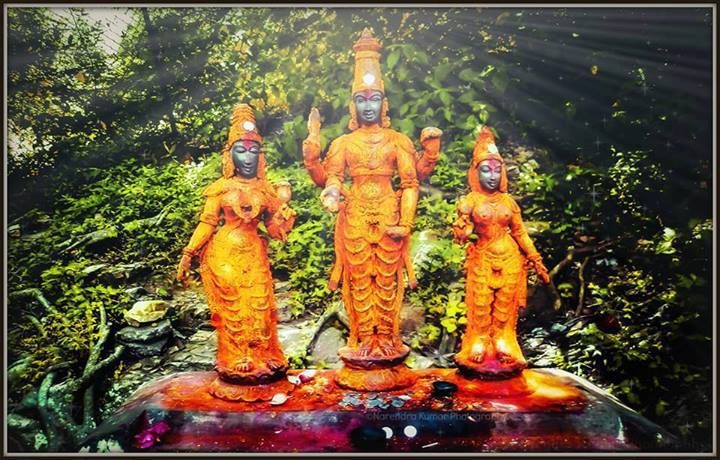
As of my last knowledge update in January 2022, I don't have specific information about a "Swami Narayana Temple" that is widely known or recognized. It's possible that there might be specific temples or organizations associated with Swaminarayan sect in Hinduism, and the name might vary slightly.
Swaminarayan Tradition:
Founder: The Swaminarayan tradition was founded by Bhagwan Swaminarayan (1781–1830), also known as Lord Swaminarayan or Sahajanand Swami.
Philosophy: The Swaminarayan tradition emphasizes the worship of God through devotion and virtuous living. It promotes spiritual values, moral conduct, and the practice of Bhakti (devotion) towards God.
Akshardham Temples: The Swaminarayan Akshardham Temples are known for their architectural grandeur and are built according to the principles outlined in Hindu scriptures. The Akshardham Temple in Delhi, for example, is a notable complex dedicated to Bhagwan Swaminarayan.
Community Centers: Swaminarayan temples often serve as community centers that provide religious and cultural education, social services, and activities for the community members.
Festivals: The followers of the Swaminarayan tradition celebrate various Hindu festivals with devotion. Major festivals include Janmashtami (the birth of Lord Krishna), Diwali (the festival of lights), and Akshaya Tritiya.
Vachanamrut and Scriptures: The teachings of Bhagwan Swaminarayan are compiled in a scripture known as the "Vachanamrut," which is considered a central text in the Swaminarayan tradition.
If you have a specific Swami Narayana Temple in mind or if there have been developments or new temples after my last update, I recommend checking local sources, official websites, or contacting local Hindu community organizations for the most accurate and recent information.
This temple is owned and run by SwamiNaryana Sampraday, a sect of Hinduism. The current temple of SwamiNaryana was remodeled in 1903. The beauty of the temple is enhanced ten-fold during Janmashtami and Ram Navami festivals.
7. Balaji Temple
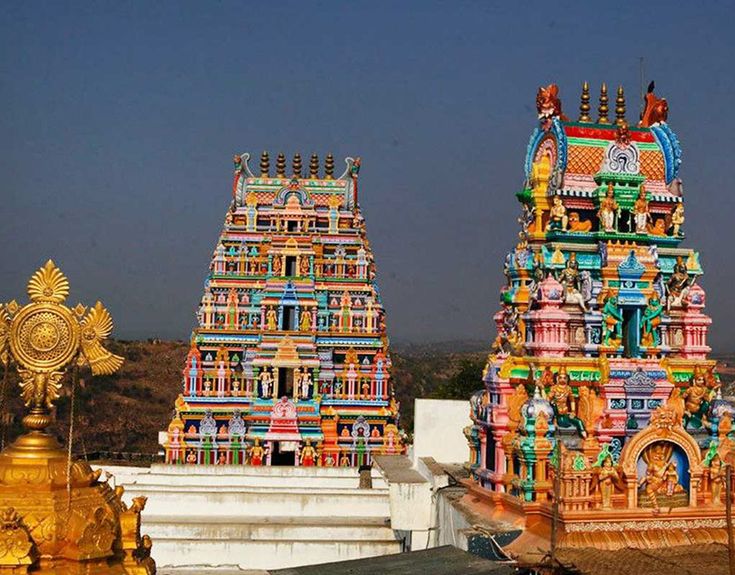
There are several temples dedicated to Lord Balaji or Lord Venkateswara, a form of Lord Vishnu, across India. The most famous and significant among them is the Tirumala Venkateswara Temple, commonly known as the Tirupati Balaji Temple. Here are details about this prominent temple:
Tirumala Venkateswara Temple (Tirupati Balaji Temple):
Deity: The main deity of the temple is Lord Venkateswara, also known as Balaji or Srinivasa. He is considered a form of Lord Vishnu, and the temple is one of the most visited and revered pilgrimage sites in India.
Location: The Tirumala Venkateswara Temple is located in the hill town of Tirumala, near Tirupati in the Chittoor district of Andhra Pradesh.
History: The temple has a rich history and is believed to have been built over a period of several centuries. It has undergone renovations and expansions under various dynasties, including the Cholas, Pallavas, and Vijayanagara rulers.
Architecture: The temple follows the Dravidian architectural style and is known for its grandeur and intricate sculptures. The sanctum sanctorum houses the deity of Lord Venkateswara, and the temple complex includes various halls, towers, and other structures.
Significance: The Tirupati Balaji Temple is considered one of the holiest shrines in Hinduism. Devotees believe that worshiping Lord Venkateswara can bring prosperity, health, and fulfillment of desires. The temple is known for its unique practices, including the tonsuring of devotees' hair as a form of offering.
Pilgrimage: The temple attracts millions of pilgrims and visitors each year, making it one of the most visited religious sites globally. The pilgrimage to Tirumala is considered a sacred journey, and devotees often climb the seven hills (Saptagiri) on foot as an act of devotion.
Festivals: Various festivals are celebrated at the Tirumala Venkateswara Temple, with Brahmotsavam being one of the most significant. During Brahmotsavam, the temple witnesses elaborate processions, rituals, and celebrations.
Prasadam: The temple is known for its distribution of prasadam (sanctified food) called "Laddu," which is a sweet offered to Lord Venkateswara. It is immensely popular and is also distributed to devotees as a form of blessing.
Accommodations: The temple complex includes facilities for pilgrims, including accommodation, dining halls, and other amenities to make the pilgrimage comfortable.
It's important to note that there are other temples dedicated to Lord Balaji or Lord Venkateswara in different parts of India, each with its own historical and cultural significance. If you have a specific Balaji Temple in mind, please provide more details or specify the location for a more accurate response.
Balaji temple, known as Lord Ventakeshwar temple, is located on a hilltop. The temple is designed to be similar to that of the Balaji temple in Tirupati. Balaji temple holds an important place among the South Indian community of the region. Inside the premises of Balaji temple, many other temples dedicated to various deities are located.
8. Hari Mandir
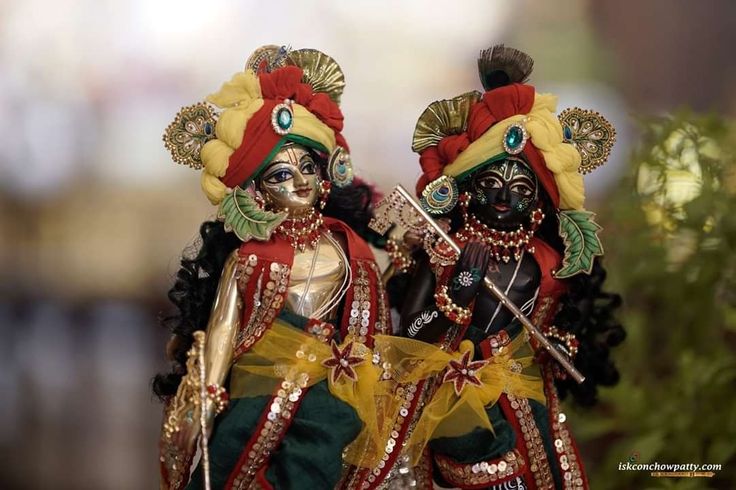
As of my last knowledge update in January 2022, there isn't a widely known and specific "Hari Mandir" in Mumbai that stands out prominently in general public knowledge. However, there might be smaller or newer temples with this name or a similar one that has gained recognition after my last update.
If "Hari Mandir" is a specific temple that you are referring to, and it has become notable or established after January 2022, I recommend checking local sources, official websites, or contacting local authorities or Hindu community organizations in Mumbai for the most accurate and recent information.
In many cases, the names of temples can vary, and they may be known by different names locally or within specific communities. Providing additional details or context about the location, deity worshiped, or any specific features associated with the temple would help in obtaining more accurate information.
Hari Mandir is one of the most famous temples in Mumbai. The temple is also called as Sanatan Dhramasabha Geeta Bhavan. The temple is dedicated to Lord Rama and Lord Krishna. The history of how the temple was built is very interesting. Around 10,000 refugees who moved to Mumbai after partition in 1947 were the main creators of this temple.
9. Walkeshwar Temple
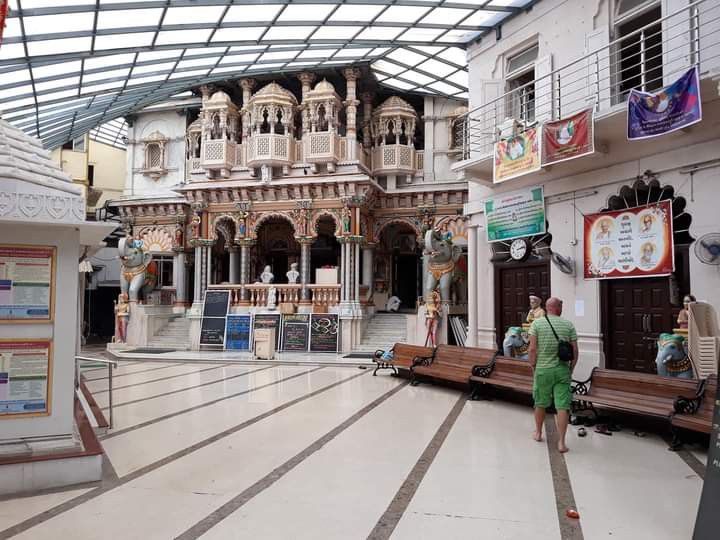
Walkeshwar Temple, also known as the Walkeshwar Shiva Temple, is a historic Hindu temple located in the Walkeshwar area of Malabar Hill in Mumbai, Maharashtra, India. Here are some key details about the Walkeshwar Temple:
Deity: The primary deity worshiped in Walkeshwar Temple is Lord Shiva, in the form of the Lingam. The temple is dedicated to the Lord under the name Walkeshwar, which translates to "Lord of the Woods" or "Valley of the Lord."
Location: The Walkeshwar Temple is situated in the Walkeshwar area of Malabar Hill, overlooking the Arabian Sea. It is one of the oldest temples in Mumbai and is located in a picturesque and serene location.
History: The temple has a rich history dating back several centuries. According to local legends, the temple was originally constructed by the Silhara kings in the 10th century. Over the years, the temple has undergone renovations and reconstructions.
Architecture: The temple follows traditional Hindu temple architecture. It features a sanctum sanctorum where the Shiva Lingam is enshrined. The outer structure is adorned with carvings and sculptures, reflecting the cultural and artistic heritage of the region.
Significance: Walkeshwar Temple is considered a sacred site, and devotees believe that worshiping Lord Shiva here brings blessings and spiritual well-being. The temple holds cultural and historical importance for the local community.
Tank: The temple is associated with the Banganga Tank, a historic water tank located nearby. The tank is believed to have originated during the 12th century and is considered one of the oldest structures in Mumbai.
Festivals: The temple observes major Hindu festivals, including Mahashivaratri, where special prayers and rituals are conducted. During festivals, the temple attracts a significant number of devotees.
Visiting the Temple: Walkeshwar Temple is open to people of all faiths, and there is no entry fee. Devotees often visit the temple to offer prayers and seek the blessings of Lord Shiva.
Scenic Location: Apart from its religious significance, the temple is located in a scenic spot with a panoramic view of the Arabian Sea. The surrounding area is known for its lush greenery and tranquility.
Walkeshwar Temple is not only a place of worship but also a historical and cultural landmark in Mumbai. It attracts both devotees and visitors who come to experience its spiritual ambiance and appreciate its architectural beauty.
Walkeshwar temple of Mumbai was established by the Gowd Saraswat Brahmin Community in 1127. The temple bears outstanding historical and cultural importance. Folklore says that the spot on which the temple is built was stopped by Lord Rama when heading to Lanka to save his wife Sita from the demon Ravana. Unfortunately, the temple was destroyed by Portuguese in the 16th century. Later the temple was rebuilt in 1715 by another Gowd Saraswat Brahmin.
10. Babu Amichand Panalal Adishwarji Jain Mandir
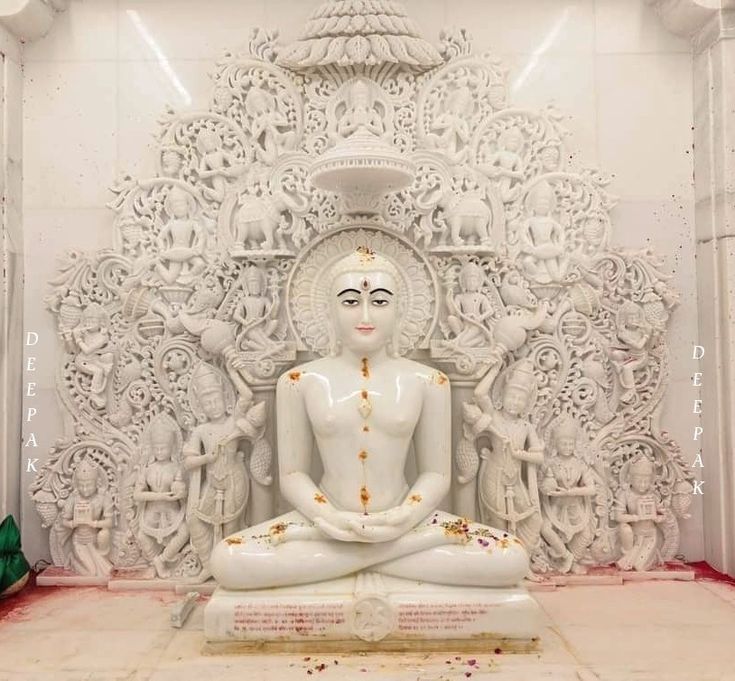
I apologize for any confusion, but as of my last knowledge update in January 2022, I still don't have specific details about the "Babu Amichand Panalal Adishwarji Jain Mandir." It's possible that this temple is a local or community-specific temple, and information about it may not be widely available outside its specific region.
To obtain more detailed and accurate information about this specific Jain temple, I recommend checking local sources, reaching out to the local Jain community or authorities, or visiting the temple in person. If there's an official website for the temple, it might provide information about its history, significance, events, and any other details.
If this temple has gained recognition or undergone changes after my last update in January 2022, checking with local sources or contacting relevant authorities is the best way to obtain the most recent and accurate information.
The Babu Amichand Panalal Adishwarji temple is well-known for its marble architecture and carving that leaves its visitors mesmerized. The temple is dedicated to the first Tirthankaras of the Jain Religion Amichand. The temple was built in the 1970s and included the idols of Lord Ganesh.
With this, we conclude the article on Top 10 famous temples of Mumbai. The list is not exclusively, Mumbai houses various other temples apart from the ones mentioned here. Next time you are in Mumbai, don’t forget to visit at least a couple of these religious places.





